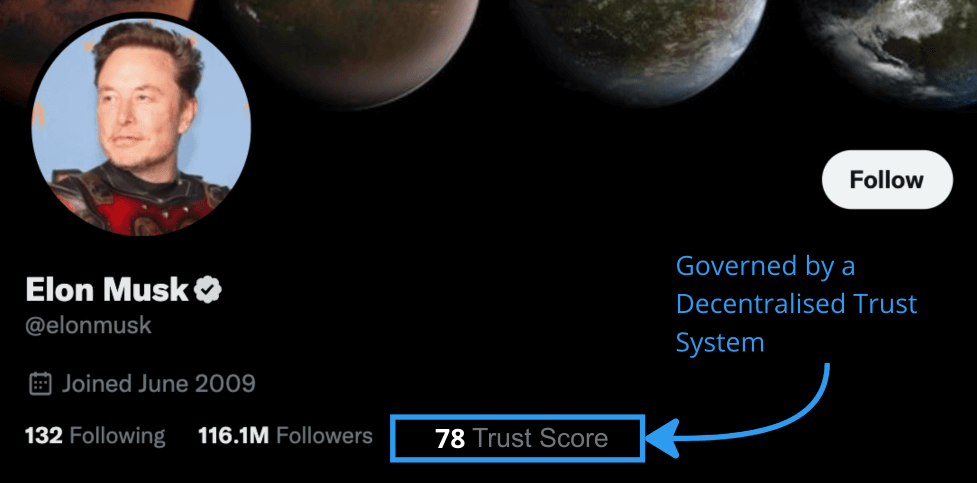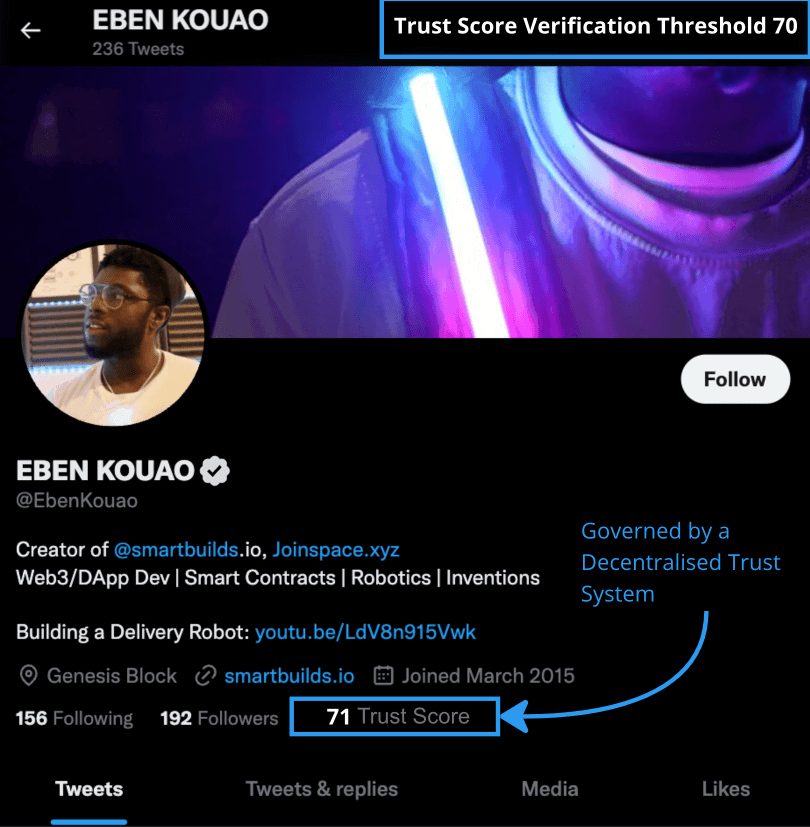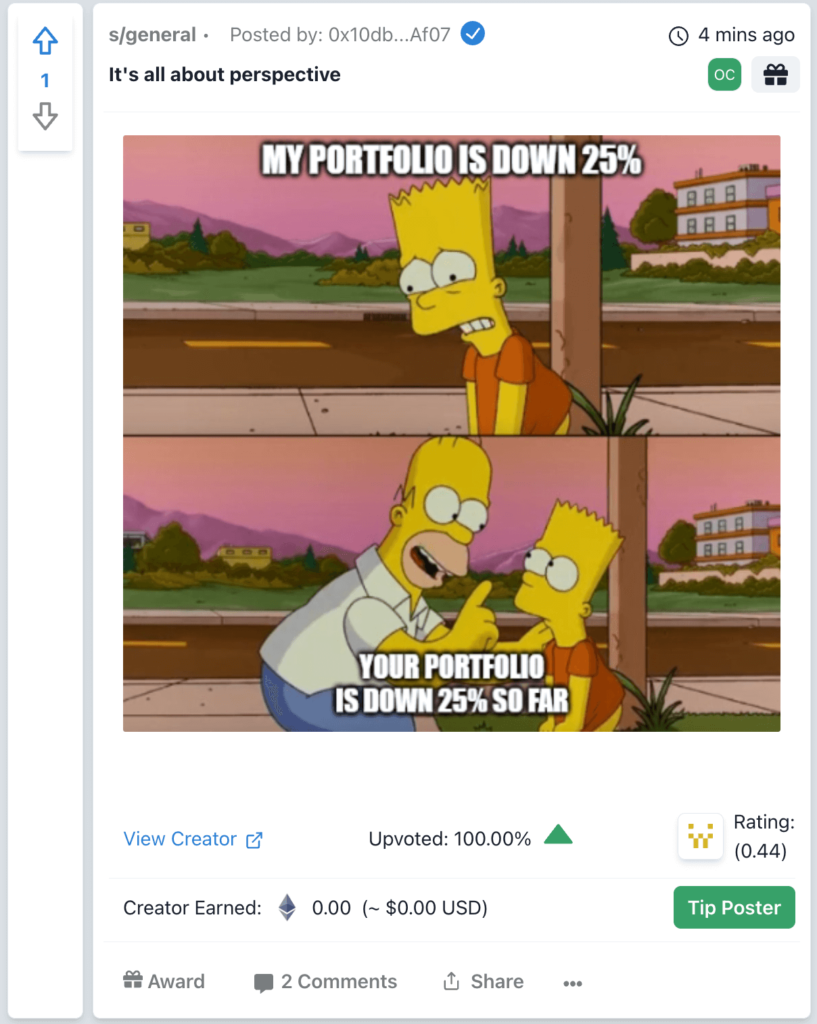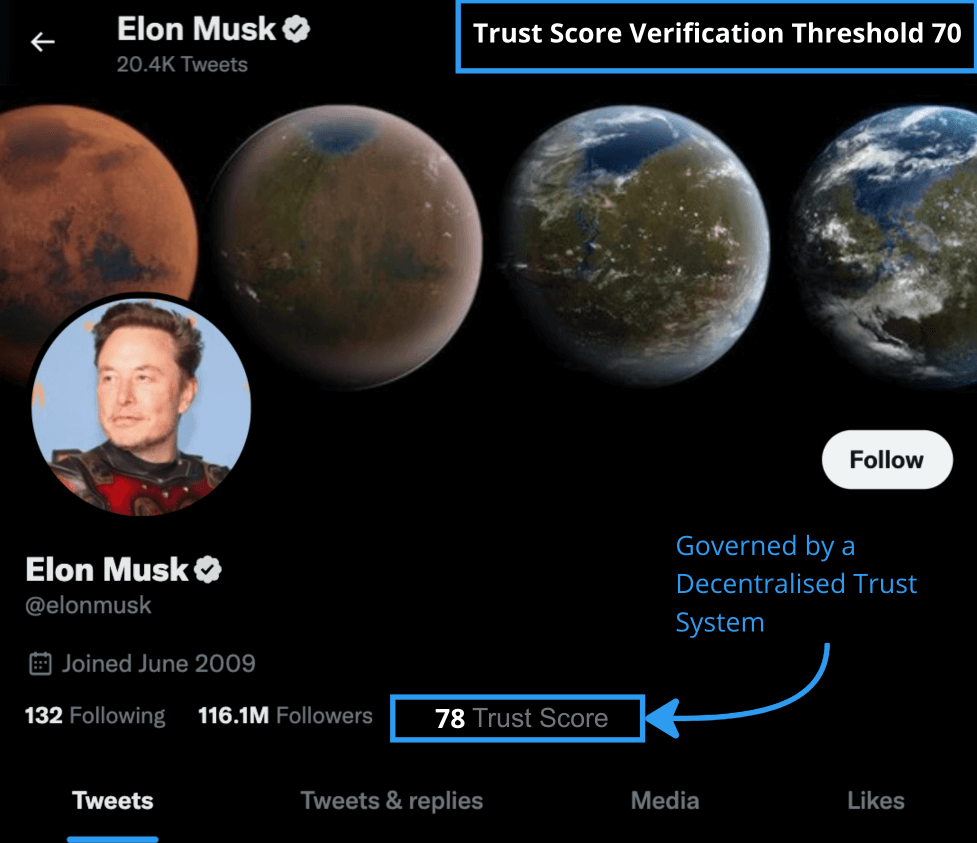
Solving Twitter’s Billion-Dollar Verification Problem – Synopsis
The proposal for a Decentralized Twitter Verification System, where users are ranked by a trust score (similar to Google’s Page Rank algorithm), could be a potential solution to Twitter’s Bot problem. An early prototype of a fully decentralized Web3 social media application was developed to prove this concept.
Twitter Blue, released in November 2022, is a solution to verify users with a blue checkmark through an $8 monthly subscription model. Given Twitter’s purchase price of $44 billion, and Elon Musk mentioning “bankruptcy is not out of the question,” it’s safe to say this is a Billion dollar solution we’re tackling.
This article outlines the architecture of a decentralized trust system for account verification and is further explained with a working prototype you can interact with.
So what’s the problem with Twitter?
Needless to say, Twitter has found itself as the global digital town square where users can connect with others and share information. Whether being real-time news stories, entertainment, or a series of odd tweets.
For better or worse, Twitter has found itself as an instrumental piece in spreading information across the world.
Spreading information is what Twitter excels at. Without delving deep into the complex issue of free speech. It has been evident that Twitter can also be used as a platform to spread harmful information. With the increasing amount of Bots, Twitter can be weaponized as a powerful tool to influence public perception.
The idea of verifying whether a User is a Bot or a verified user (as well as the ranking of the trustability of the given user) could be a way to circumvent and drastically reduce Twitter’s bot problem.
Note: This article holds no opinion on political views and looks into how technology can solve real-world issues.
Following Twitter’s acquisition timeline, The first few weeks have been faced with a myriad of issues, whereby the “Bot Problem” has been the foreground issue Twitter has been trying to solve. Twitter Blue, rolled out on November 22, was a direct response to this issue. Twitter Blue is a monthly subscription whereby a user pays an $8 fee in order to receive additional benefits that a normal user wouldn’t.
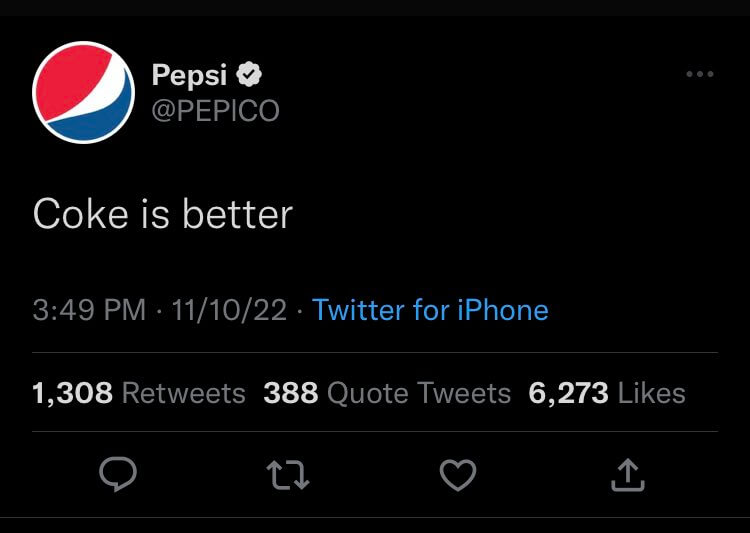
This includes priority tweets, edit tweets, and on top of that, a blue checkmark that proves that the following user has been verified. Needless to say, this has been received with mixed responses from users across the platform.
Upon the roll-out of Twitter Blue, troll users impersonating users’ accounts pounced at the idea of impersonating “real verified accounts”.
This problem seemed to have had the opposite intention, with some troll users foaming at the mouth with the idea of wielding a blue check for $8.
With Twitter’s ongoing Bot problem, accompanied by an array of other issues. The question is, how do we solve a billion-dollar verification issue?
So what’s the solution: Let’s enter the real world.
Similar to the real world, in a small community, a person earns trust through the value they provide to their community. By in large, with a large enough “trust” built, the following community member in question becomes a trustworthy source through their previously known contributions.
If only we could commodify this trust into a trust-based system, this is where the solution lies.
We’ll take this “trust model” into Twitter, whereby a user earns trust/ builds a reputation and becomes verified through the value provided to the community over a historical view of engagement factors such as retweets and likes awarded by the community.
Let’s dive deep into how Twitter’s Verification system would work.
How Decentralized Twitter’s Trust Verification Works:

There are various ways to implement the trust score algorithm. However, given the scale of Twitter, the approach would be to implement a similar algorithm used to rank search engine pages. This is known as a page rank algorithm. However, Instead of pages, we’re ranking accounts.
PageRank Algorithm Visualization – More Quality Backlinks, Better Assumed Content
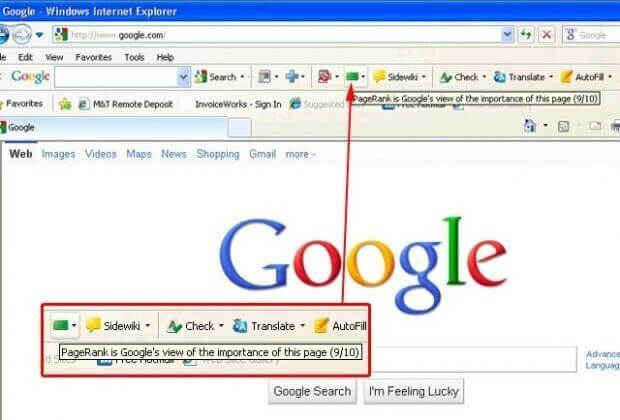
The PageRank Algorithm is the concept behind Google’s Search engine algorithm. The algorithm ranks sites based on backlinks. Ideally, Page Rank works by counting the number of quality links to a page in order to determine a rough estimate of how important a site is.
That’s why a news site typically ranks higher on Page 1 of Google as more blogs (that happen to be “credible”) are pointing to that original source of info. Similar to a research paper with more references implying a credible source of info.
Taking the Page Rank algorithm theory, as mentioned, instead of site, we’ll be ranking Twitter profiles instead. Whereby we’ll use engagement factors such as likes/ retweets to determine the trust score.
This is where decentralization plays a part: the algorithm would provide a rating equivalent that would be used to calculate the number of tokens the Twitter governance should award.
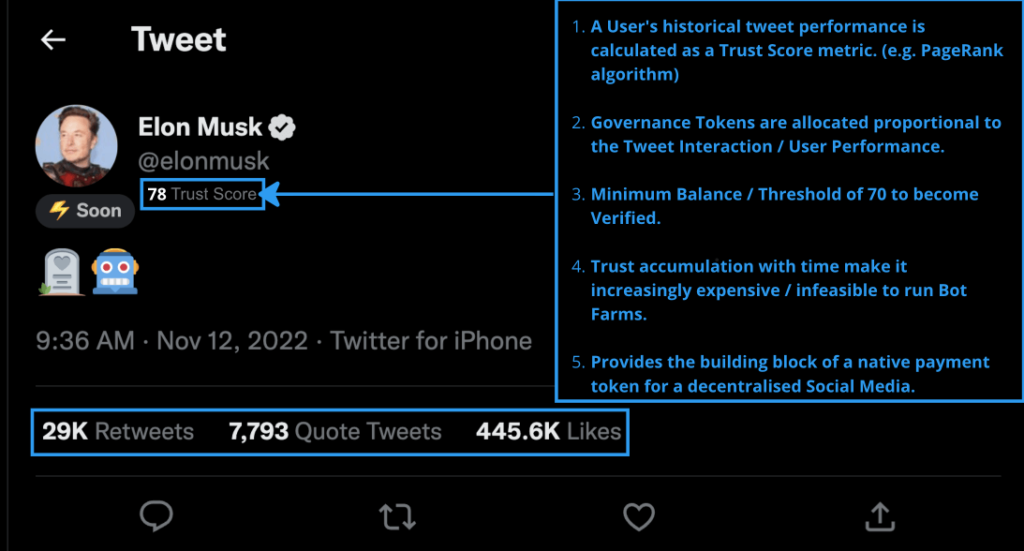
A Decentralized Governance system could be “soulbound” non-transferrable tokens as a way to behave similarly to Reddit’s Karma points.
A decentralized twitter governance system would make a case for how ERC20 tokens could be used to not only solve this problem but to lay out the blueprints for a future decentralized social media. E.g., award privileges based on a user token balance/ trust score milestones.
Context: What are ERC20 Tokens?
At the very heart. An ERC20 Token can virtually represent any asset on the Blockchain. We’ve seen ERC20 tokens being used as cryptocurrencies and voting rights in DAO’s protocols.
ERC20 Tokens are a fungible asset like a real-world coin (i.e., 1 ABC token == 1 ABC token, similar to £1 == £1) this makes ERC20 tokens a good candidate for the solution we’re about to implement. For more information, visit an earlier blog – Web3 Explained.
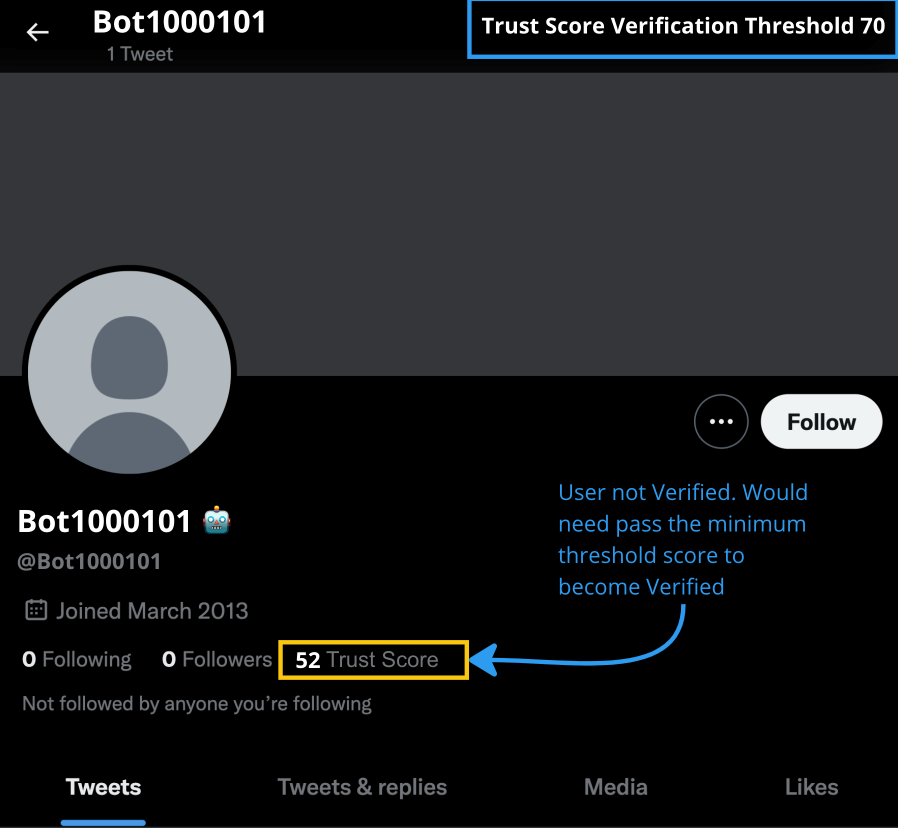
Note: As a way to circumvent users’ from gaming the system. Similar to Page Rank. Other verified users engaging with the target user would have a heavier weighting in calculating the verified user’s historical performance as compared to unverified users. Given the likeliness of Bot Farm’s exploits.
It would be at the discretion of Twitter to make the tokens tradable, which could provide some form of in-house utility, or to make these tokens non-transferable.
The potential of a decentralized verification system leads to a democratized trust system based on individual account merit/performance, similar to how search engines rank sites based on their “perceived” valuable content to the reader.
The following outlines the potential benefits, drawbacks, and possible contingencies of implementing a decentralized verification system.
Benefits:
- Reduce Bot Farms / makes it increasingly expensive to run one
- Penalizes “bad actors” – trust score reflects a user’s credibility
- Provides a bridge for blockchain / future decentralized protocols. I.e., lays the blueprint for a Twitter Governance DAO.
- Tokenised points allow for trade, additional in-house features, and the ability to tip users for content they want to support) – Assuming tokens are not soulbound.
Drawbacks:
As with all new, untested technologies, It’s important to mention the potential unintended drawbacks a Decentralized Twitter Verification System could lead to
- User “attempting” to game the system – Users could simply “Content farm” by posting recycled content in order to “Farm” tokens. Or a user could transfer tokens from one account to another in order to become verified.
- The current sentiment of Blockchain/ ERC20 Tokens.
Contingencies:
A possible solution for the latter of point 1 would be making these governance tokens non-transferrable, transferring of tokens. Or even introduce token snapshots.
Current sentiment could play a large pushback on implementing blockchain-related technologies within legacy web2.0 Platforms. And may lead to knowledge gaps, Given a wallet would be required to be associated with every Twitter user in order to receive trust tokens.
Given the current state of Twitter and the talks of Twitter 2.0. The use of blockchain technology within Twitter’s architecture could be a critical piece to tackling the bot problem, democratizing content, and building the scaffolds to decentralize the moderation system.
JoinSpace Tokenised System – A Decentralized Social Media I built
JoinSpace – A Web3 Decentralized Social Meda (Like Reddit but on Web3)
The idea of a Twitter Verification system has been an early feature already implemented in JoinSpace – a Web3 Decentralized Social media. (Like Reddit bit on Web 3)
This is a live DApp (Decentralized App) you can post on, whereby you’ll build a reputation and get verified by the number of Upvotes awarded by the community. Think of Reddit but on Web3. Connect your wallet, post, and interact just like you’ll do with Reddit. For more information on JoinSpace Architecture.
Conclusion:
The proposal of a decentralized trust-based system could provide Twitter with a plausible solution to verify Twitter users through a page rank algorithm to build trust, eventually becoming verified. This system makes it increasingly more difficult to run large bot farms. Given it takes time to build a reputation. Transferring tokens to and from various Twitter 2.0 accounts becomes expensive/infeasible for a bot farm to execute.
